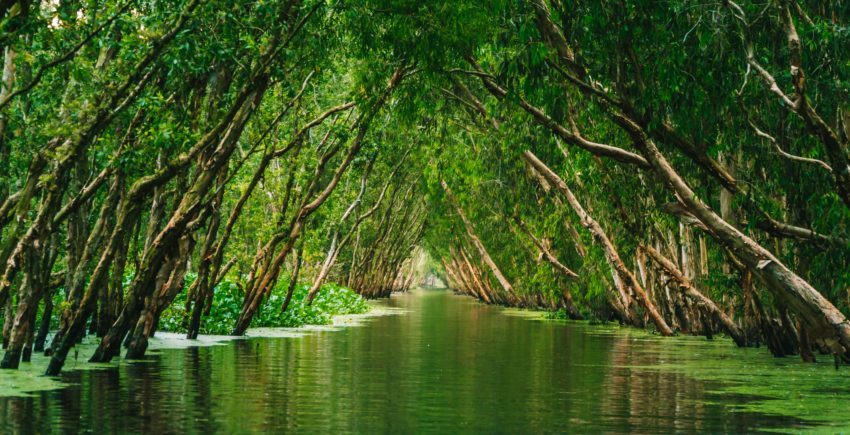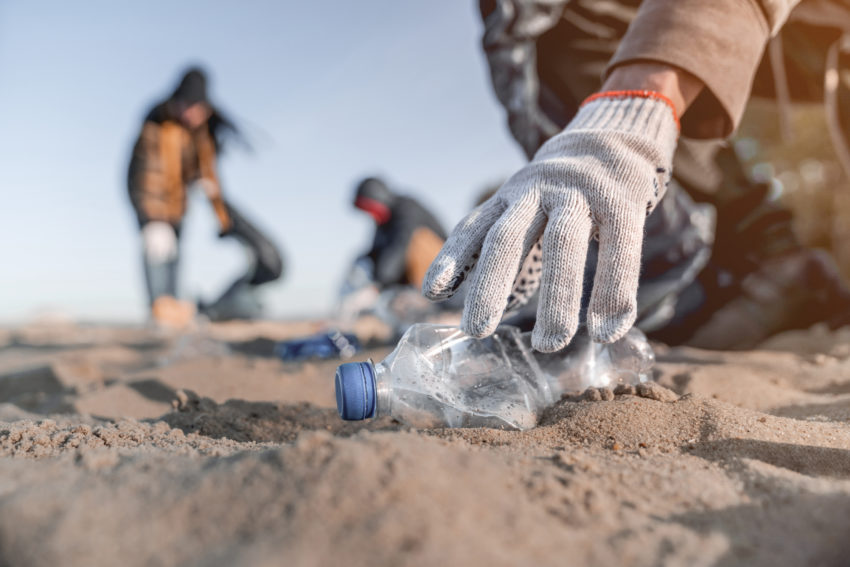Does Earth Day have you reflecting on your business and wishing it were more sustainable? The good news is that as a tour operator, you have all the skills and resources you need to practice sustainable tourism. But while sustainability is a powerful goal, it might seem vague or out of reach. Defining sustainable tourism and gaining an understanding of what it looks like is a great place to start when making your business more sustainable.

The UN World Tourism Organization is one of the leading groups in sustainable tourism, and here is how they define sustainable tourism: “Tourism that takes full account of its current and future economic, social and environmental impacts, addressing the needs of visitors, the industry, the environment and host communities.”
The term sustainable tourism is often interchanged with ecotourism or responsible tourism, and while they may share some themes, they are not the same. So, what’s the difference? Ecotourism is a niche segment of tourism in natural areas. It is a sustainable form of natural resource-based tourism that focuses on experiencing and learning about nature. Responsible tourism is primarily concerned with the behavior and choices of individual travelers. It focuses on the ways that individuals interact with destinations and their desire to make a positive impact while traveling. Sustainable tourism applies to all areas of tourism. It involves looking at your business practices through a sustainability lens and implementing changes wherever possible.
How can participating in sustainable tourism benefit a tour operator?
From a big picture standpoint, participating in sustainable tourism just makes sense. The world is changing and adaptation is necessary to ensure the longevity of your business. Mitigating the effects of climate change is particularly important for the survival of the tourism industry because it relies so heavily on showcasing natural landscapes and outdoor activities. In addition to addressing long term issues like climate change, sustainable tourism can provide your business with socio-cultural and economic benefits right now.

Tour operators should see sustainable tourism development as an opportunity rather than an obligation. While sustainability can look different depending on your location and type of tour, some universal benefits of sustainable tourism are:
- Added value: As the global population grows increasingly conscientious, travelers are willing to pay more for services from a socially-responsible business. If competing tours are offering similar experiences, sustainability can serve as the deciding factor for tourists.
- Employment quality: Sustainable tourism encourages you to hire locally, providing income-earning opportunities for your community. Contributing to the local economy helps your destination thrive while providing you with employees who are more knowledgeable and take great pride in your destination.
- Customer satisfaction: Tours are more fulfilling when they seek to educate on local culture, sustainability and environmental impacts. Not only will guests leave feeling like they’ve had a meaningful experience, but they will feel good about putting their money into an ethical company.
- Opportunity for innovation: Sustainable tourism calls for new practices and operations that can lead to exciting new experiences for you and your guests. It allows for creativity and collaboration that may have never materialized otherwise.
The biggest trends in sustainable tourism
All around the globe, tour operators are approaching sustainable tourism in ways that work for their businesses and their destinations. Adopting sustainable tourism practices can be a fun way to upgrade your tours and feel more connected to your destination. Below we have some examples of how tour operators are making the most of sustainable tourism to promote their destination.
Enjoying the natural world
“Take only pictures, leave only footprints” is a mantra that tour operators have adopted while taking guests out on excursions. It reminds guests to focus on not disrupting an area while exploring it. In practice, this involves staff mapping out trails and routes that preserve an area. Travelers are asked not to wander off existing paths and to avoid feeding animals.

And many tour operators are going beyond this starting point to great results. For example, some marine and wildlife tours are tailoring their activities to become more sustainable. A tour that takes guests diving may choose to incorporate fishing net removal to the excursion. It requires little change to the itinerary, but it increases awareness and promotes environmental protection. Another activity that is easy to implement is a beach cleanup, which gives tourists the opportunity to enjoy the destination while making a positive impact. Additionally, a growing number of whale watching and river rafting tour operators are choosing to partner with initiatives that support marine conservation such as the Center for Whale Research or the Pacific Salmon Foundation.

The west coast of Canada is famous for connecting travelers with rich ecosystems and breathtaking landscapes. Some operators are partnering with Indigenous guides and communities whose cultures are rooted in environmental stewardship. Whether it’s exploring an ancient coastal village or learning about traditional plant medicines, these tours can impact travelers in a way that forever changes the way that they view and interact with nature.
Tours operating in protected areas have developed sustainable tourism practices that have allowed them to flourish while protecting delicate ecosystems. Operators have created itineraries that give customers information about the area’s natural and cultural features and their role in the conservation of local areas. They are also providing travelers with information on how to avoid negative impacts while visiting sensitive areas.
In Croatia, tour guides hand out garbage disposal bags in various colors and explain how to separate waste. The bags are reusable and all of the waste is deposited into the appropriate bins. Guides have fun with this by organizing competitions among travelers which creates incentive and keeps things interesting.
Exploring the urban landscape
In urban areas, tour operators are opting for public transit excursions. Taking advantage of local buses and trains gives travelers the chance to connect with the destination and “do as the locals do.” Switching from private shuttles to public transportation helps to reduce CO2 levels and it is an economically better choice for tour operators.
For many, shopping is an integral part of travel. Guides are using this to support sustainable tourism by drawing attention to merchants and stores selling local handmade goods. They are offering things like visits to farmers markets or art studio tours. This is a great opportunity to educate travelers on the advantages of shopping local while highlighting local specialties that are unique to a specific area.
Building a sustainable business

A huge aspect of sustainable tourism is about divesting in foreign owned companies and investing in local businesses. For this reason, tour operators are looking to prioritize building the capacity of local suppliers. Using local suppliers can help meet the quality and sustainability standards you’re looking to achieve as a business owner and it aids in the promotion of local products to your customers. Switching to local products has multiple sustainability benefits. Not only does it strengthen the relationship between your business and the community, it also cuts the CO2 emissions that are emitted during the transport of goods. Whether it’s the food you offer or the uniforms your staff wear, there is likely a local alternative to a foreign supplier.
How can a tour operator get involved?
You are not alone on your journey to become more sustainable. There are a number of resources that can help to provide guidance and inspiration. A great place to start is the Global Sustainable Tourism Council, which has created criteria that set out the minimum that any tourism business should aspire to reach. These criteria are organized into four main themes: effective sustainability planning, maximizing social and economic benefits for the local community, enhancing cultural heritage, and reducing negative impacts to the environment.
As a small business owner, it’s easy to get caught up in the feeling that your voice isn’t loud enough. Consider joining, or starting, a coalition with other like-minded companies to advocate for sustainable tourism. This gives you the chance to be a leader in your community and a champion for a cause that you care about. You might also want to consider participating in something like the 1% for the Planet Initiative, a commitment to donating 1% of sales to go towards various environmental organizations. This is a great option if you feel like you don’t know where to start. With your membership, you will be given partnership advising that will help you connect with environmental nonprofits that align with your values and brand.

Begin by looking inward by taking time to assess your core values and business plan. Making sustainability a core value for your company puts it at the forefront of every decision you make. Start small, look at your daily operations and consider the areas where improvements can be made. Even things that may seem insignificant, like switching to non-toxic cleaning products or ensuring that you recycle all your ink cartridges in the office, will add up. With a few minor adjustments, you could be well on your way to running a more sustainable business.
The changes that you make to your tours need to be practical, achievable and above all else they need to be sustainable. As more and more tour operators begin adopting sustainable business practices, the results will compound. Remember that every step you take towards sustainability is a step in the right direction.
Search The Blog
Most Popular Articles
- Set-jetting, Forest Bathing, and Hush Trips: 20 Innovative Tourism Business Ideas and Trends for 2023
- Advantages and Disadvantages of Online Travel Agencies (OTAs)
- Your Marketing Mix: the 7 Ps of Travel and Tourism Marketing
- How to Create and Promote Amazing Tour Packages
- How to Create a Business Plan for Your Tour or Travel Company





